Page 17 of 140
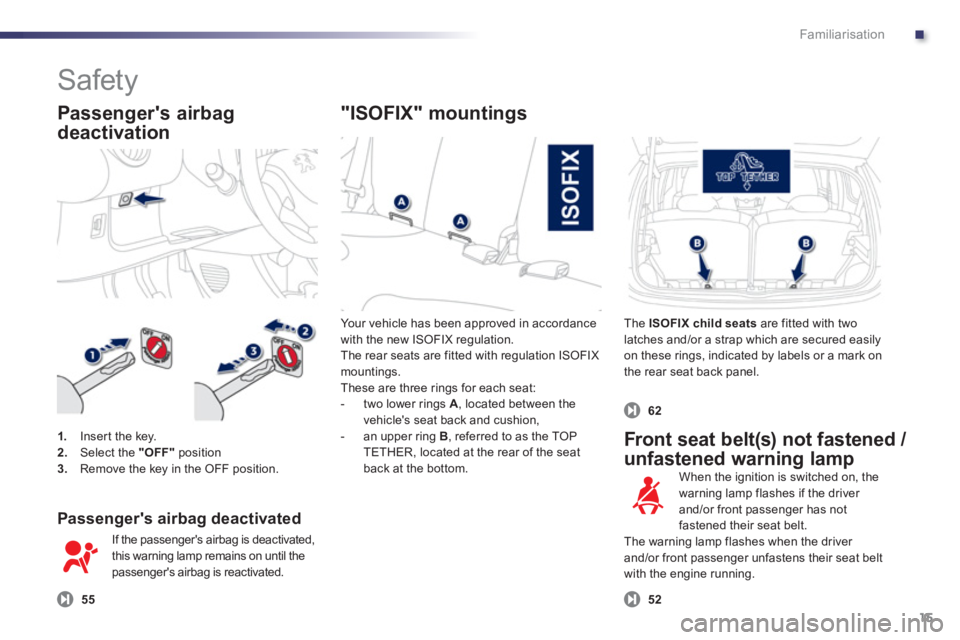
.Familiarisation
15
Your vehicle has been approved in accordancewith the new ISOFIX regulation.
The rear seats are fitted with regulation ISOFIX
mountings.
These are three rings for each seat:
- two lower rings A , located between the
vehicle's seat back and cushion,- an upper ring B
, referred to as the TOP TETHER, located at the rear of the seat back at the bottom.
The ISOFIX child seats
are fitted with two
latches and/or a strap which are secured easily on these rings, indicated by labels or a mark on
the rear seat back panel.
Passenger's airbag deactivated
If the passenger's airbag is deactivated,
this warning lamp remains on until thepassenger's airbag is reactivated.
Front seat belt(s) not fastened /
unfastened warning lamp
1.
Inser t the key. 2.Select the "OFF"
position3.Remove the key in the OFF position.
When the ignition is switched on, the
warning lamp flashes if the driver and/or front passenger has not fastened their seat belt.
The warning lamp flashes when the driver
and/or front passenger unfastens their seat belt
with the engine running.
Safety
Passenger's airbag
deactivation"ISOFIX" mountin
gs
556
2
52
Page 18 of 140

Moving off
With the parking brake applied, press the brakepedal then select position N to star t the engine.
With your foot on the brake, select position R , Eor M.Release the parking brake, take your foot off
the brake
pedal, then accelerate. Select position
Eusing the gear lever.
The gear engaged is displayed in the
instrument panel screen.
The gearbox continuously selects the most
suitable gear.
Manual mode
Press the clutch pedal fully when changinggear.
Reverse
To engage reverse gear, push the gear lever fully to the right then towards the rear. Reverse gear can only be engaged when the vehicle is stationary, engine at idle.
Driving safely
EASY mode (automatic mode)Manual gearbox
43
43
42
Place the gear lever in position M
, then changeup or down through the gears by pressing the lever:
- rearwards, "+"to change up,
- forwards, "-"to change down.
You can also use the steering mounted control
paddles.
The gear engaged is displayed in the instrument panel screen.
Familiarisation
16
Page 19 of 140

..
Eco-driving
Eco-driving is a range of everyday practices that allow the motorist to optimise their fuel consumption and CO2 emissions.
Optimise the use of your
gearbox
With a manual gearbox, move off gently, change up without waiting and drive by changing up quite soon.
With the 2 Tr o n i c gearbox stay in Easy "E"without pressing the accelerator pedal heavily or suddenly.
Drive smoothly
Maintain a safe distance between vehicles, use engine braking rather than the brake pedal, and press the accelerator progressively. These practices contribute towards a reduction in fuel consumption and CO2 emissions and also helps reduce the
background traffic noise.
Control the use of your electrical equipment
Before moving off, if the passenger compartment is too warm, ventilate it byopening the windows and air vents before using the air conditioning.
Above 30 mph (50 km/h), close the windowsand leave the air vents open. Remember to make use of equipment that canhelp keep the temperature in the passenger compartment down (sun blinds, ...).Switch off the air conditioning as soon as the desired temperature is attained.Switch off the demisting and defrosting controls, if not automatic.
Switch off the headlamps and the foglamp when the level of light does not require their use.
Avoid running the engine before moving off,particularly in winter; your vehicle will warmup much faster while driving.
As a passenger, if you avoid connecting your multimedia devices (film, music, video game...), you will contribute towards limitingthe consumption of electrical energy, and soof fuel.
Disconnect your por table devices beforeleaving the vehicle.
17
Page 20 of 140

18
Limit the causes of excess
consumption
Spread loads throughout the vehicle; placethe heaviest items in the bottom of the boot,as close as possible to the rear seats.Limit the loads carried in the vehicle andreduce wind resistance (roof bars, roof rack, bicycle carrier, ...). Use a roof box inpreference.Remove roof bars and roof racks after use.
At the end of winter, remove snow tyres and refit your summer tyres.
Observe the recommendations
on maintenance
Check the tyre pressures regularly, when cold, referring to the label in the door aper ture, driver's side.
Carry out this check in par ticular:
- before a long journey,
- at each change of season,
- after a long period out of use.
Don't forget the spare wheel.
Have your vehicle ser viced regularly (engine oil, oil filter, air filter...) and obser ve the schedule of operations recommended by themanufacturer.
When refuelling, do not continue after the 3rd
cut-off of the nozzle to avoid any overflow.
At the wheel of your new vehicle, it is onlyafter the first 1 800 miles (3 000 kilometres) that you will see the fuel consumption settle down to a consistent average.
Page 21 of 140
1
Instruments and controls
19
Instrument panel
1.Total or trip distance recorder display button,
trip zero reset button
2. Display of warning lamps 3.
Direction indicators4.
Speedometer
5. Fuel gauge 6
. To t a l / trip distance recorder 7.Front foglamp warning lamp8.
Rear foglamp warning lamp9.Main beam headlamp warning lamp
10. Dipped beam headlamp warning lamp
Rev counter
Approaching the maximum engine speed, when
the rev counter needle crosses into the red
zone, you must change up.
11. Indicator of gear engaged or position of thegear lever for the 2 Tronic gearbox.
Page 22 of 140

Instruments and controls
20
Warning lamps
Warning lampis onCauseAction/Observations
Parking brake
fixed. The parking brake is applied or not properly released. With
your foot on the brake pedal, release the parking brake
to switch off the warning lamp.
Observe the safety recommendations.
For more information, refer to the "Parkin
g brake" section.
STOP
fixed, associated
with another warning lamp.It is associated with the en
gine
oil pressure or the engine coolant temperature. Stop as soon as it is safe to do so.
Park, switch off the ignition and call a PEUGEOT dealer or qualified workshop.
Engine oilpressure
fixed, associated
with the STOP warning lamp.The en
gine oilpressure is too low.
Stop as soon it is safe to do so.
Park, switch off the ignition and contact a PEUGEOT dealer or a qualified workshop.
Braking
fixed. The braking system fluid level has dropped significantly. Top up with brake
fluid recommended by PEUGEOT.
If the problem persists, have the system checked by a
PEUGEOT dealer or a qualified workshop.
+
fixed, associated
with the ABSwarning lamp.The braking systemhas a fault. Stop as soon as it is safe to do so. Park, switch off the ignition
and contact a PEUGEOT dealer or a qualified workshop.
Page 23 of 140

1
VSC
Instruments and controls
21
Anti-lock Braking System (ABS)
fixed. The anti-lock braking system has a fault. The vehicle retains conventional brakin
g.
Drive carefully at reduced speed and contact a PEUGEOT
dealer or a qualified workshop without delay.
Electronicstability programme(ASR/ESP)
fixed. The ASR /ESP system is inaction. The system optimises traction and improves
the directional stability of the vehicle.
fix
ed. The ASR/ESP system has a fault. Have it checked by a PEUGEOT dealer or
a qualified workshop.
Coolanttemperature
fixed. The temperature of the engine coolant is too high.
Stop as soon as it is safe to do so.
Wait until the engine has cooled down before checking up thelevel; top up if necessary.
If the problem persists, contact a PEUGEOT dealer or qualified workshop.
Airbagstemporar
ily.This lamp comes on for a fewseconds when you turn on the
ignition, then goes off. This lamp should
go off when the engine is started.
If it does not go off, contact a PEUGEOT dealer or a qualified
workshop.
flashing. At least one of the airbags hasa fault. The airba
gs may not be deployed in the event of a serious
impact. Have it checked by a PEUGEOT dealer or a qualified
workshop.
Warning lampis onCauseAction/Observations
Page 24 of 140

P/S
Instruments and controls
22
Deactivating
the passenger'sairbag fixed. The passen
ger's airbag control is set to the OFF
position.
The passenger's front airbag is
deactivated.
In this case you can install a
"rear
facing"child seat.
Set the control to the ON
position to activate the passenger's
front airbag. In this case, do not fit a child seat in therear-facing position.
Battery charge
fixed. The battery charging circuit has
a fault (dirty or loose terminals, slack or cut alternator belt, ...). The warnin
g lamp should go off when the engine is started.
If it does not go off, contact a PEUGEOT dealer or a qualified
workshop.
Electric power steering
fixed. The electric power steering hasa fault. Drive carefully at reduced speed.
Have it checked by a PEUGEOT dealer or qualified workshop.
Front seat beltnot fastened /
unfastened(depending on version)
flashing, then above
12 mph (20 km/h),
accompanied b
y an audible signal.
The driver and/or front
passenger has not fastened or has unfastened their seat belt. Pull the strap then inser t the tongue in the buckle.
Emission control system fixed. The emission control system has a fault. This lamp should
go off when the engine is started.
If it does not go off, contact a PEUGEOT dealer or a qualified
workshop without delay.
2 Tr o n i c gearbox
fixed. The 2 Tr o n i c gearbox has a
fault. Contact a PEUGEOT dealer or a qualified workshop without
delay.
Warning lampis onCauseAction/Observations
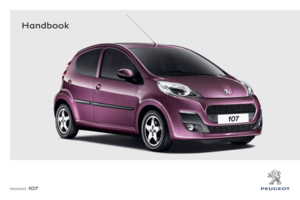 1
1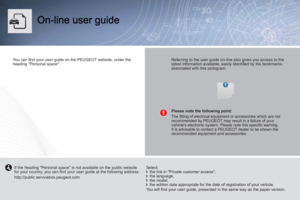 2
2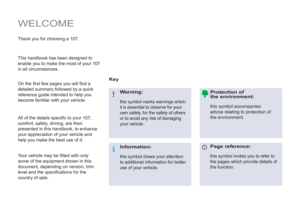 3
3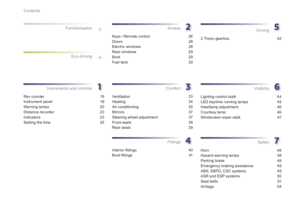 4
4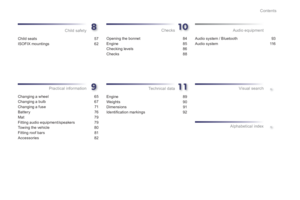 5
5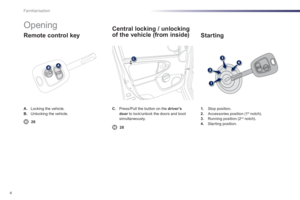 6
6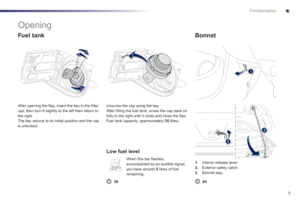 7
7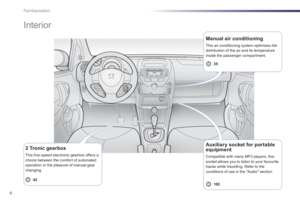 8
8 9
9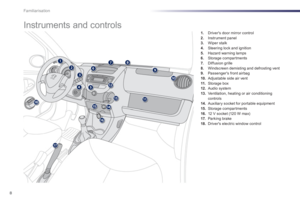 10
10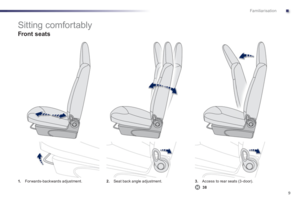 11
11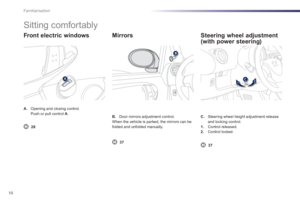 12
12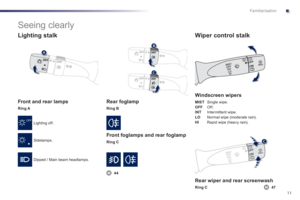 13
13 14
14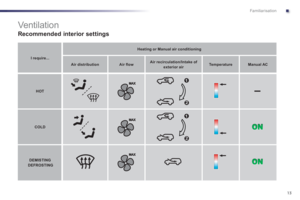 15
15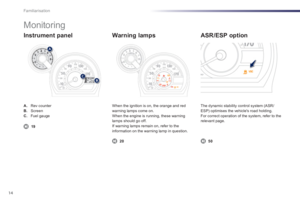 16
16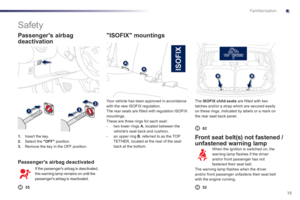 17
17 18
18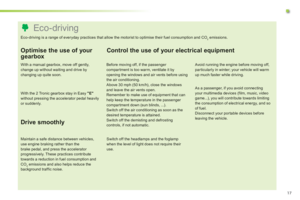 19
19 20
20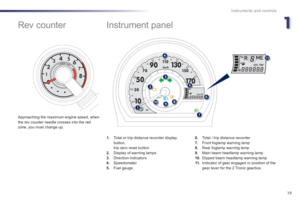 21
21 22
22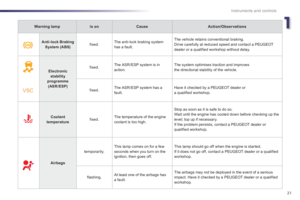 23
23 24
24 25
25 26
26 27
27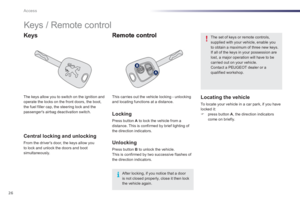 28
28 29
29 30
30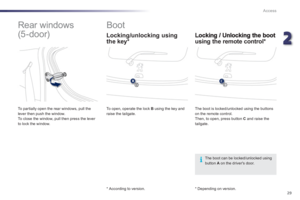 31
31 32
32 33
33 34
34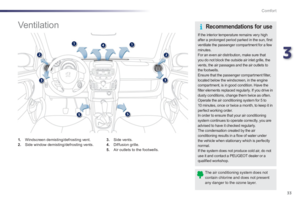 35
35 36
36 37
37 38
38 39
39 40
40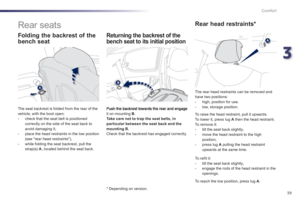 41
41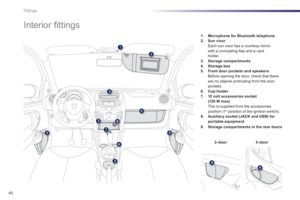 42
42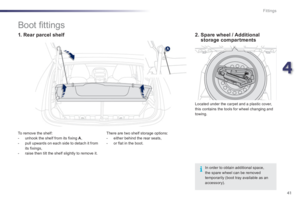 43
43 44
44 45
45 46
46 47
47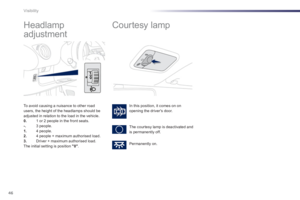 48
48 49
49 50
50 51
51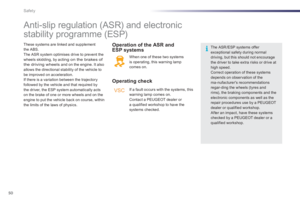 52
52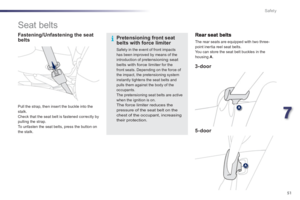 53
53 54
54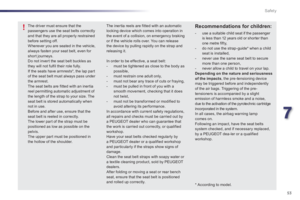 55
55 56
56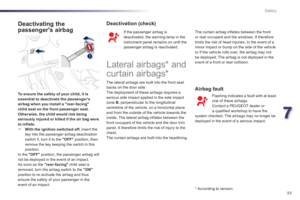 57
57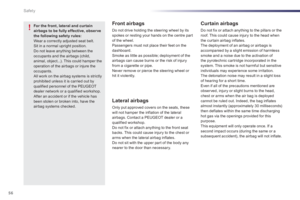 58
58 59
59 60
60 61
61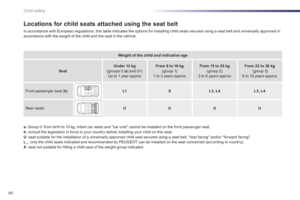 62
62 63
63 64
64 65
65 66
66 67
67 68
68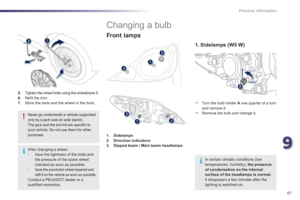 69
69 70
70 71
71 72
72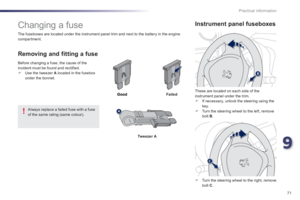 73
73 74
74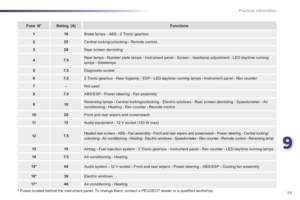 75
75 76
76 77
77 78
78 79
79 80
80 81
81 82
82 83
83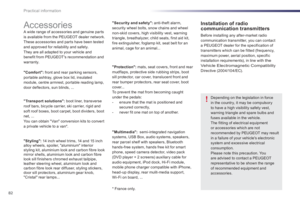 84
84 85
85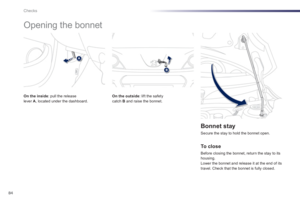 86
86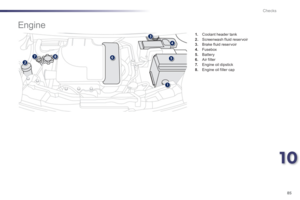 87
87 88
88 89
89 90
90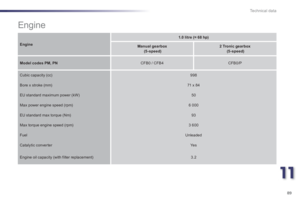 91
91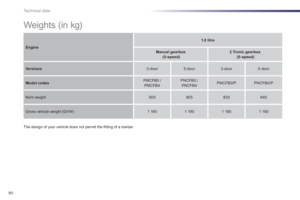 92
92 93
93 94
94 95
95 96
96 97
97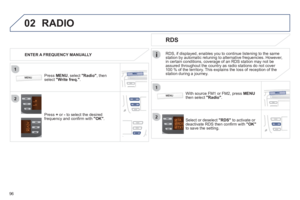 98
98 99
99 100
100 101
101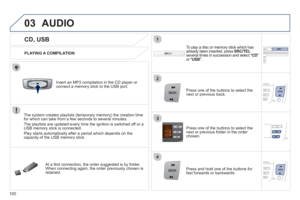 102
102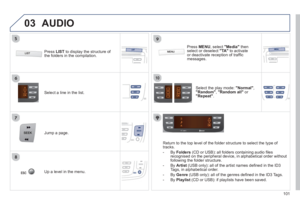 103
103 104
104 105
105 106
106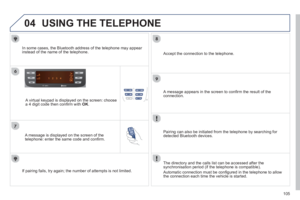 107
107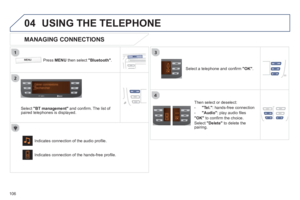 108
108 109
109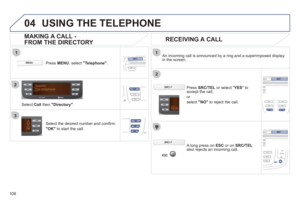 110
110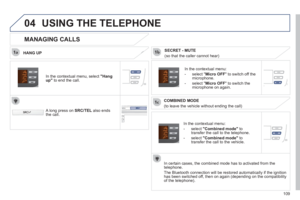 111
111 112
112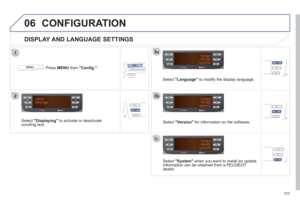 113
113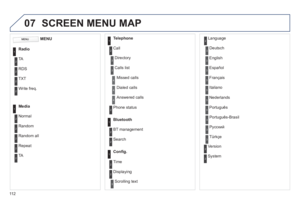 114
114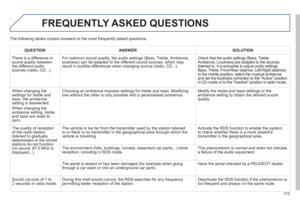 115
115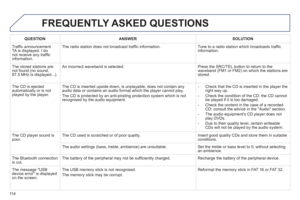 116
116 117
117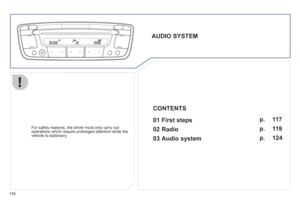 118
118 119
119 120
120 121
121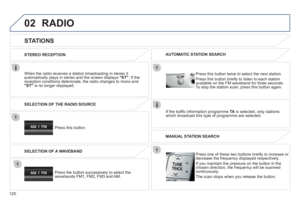 122
122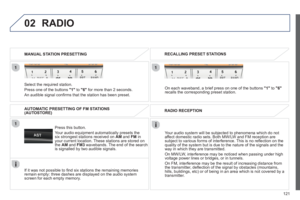 123
123 124
124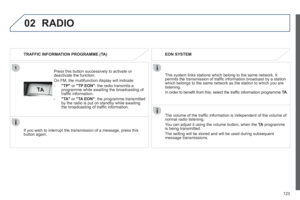 125
125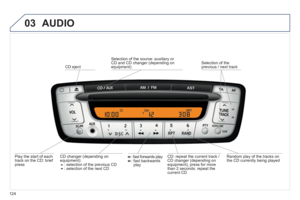 126
126 127
127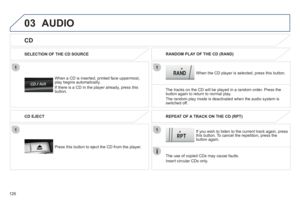 128
128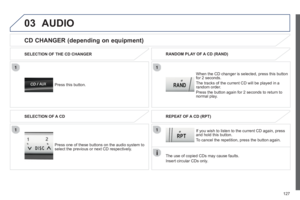 129
129 130
130 131
131 132
132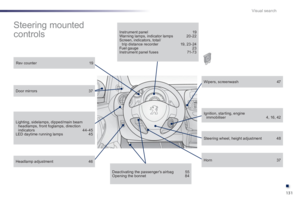 133
133 134
134 135
135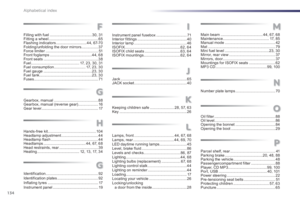 136
136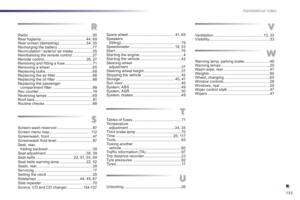 137
137 138
138 139
139






